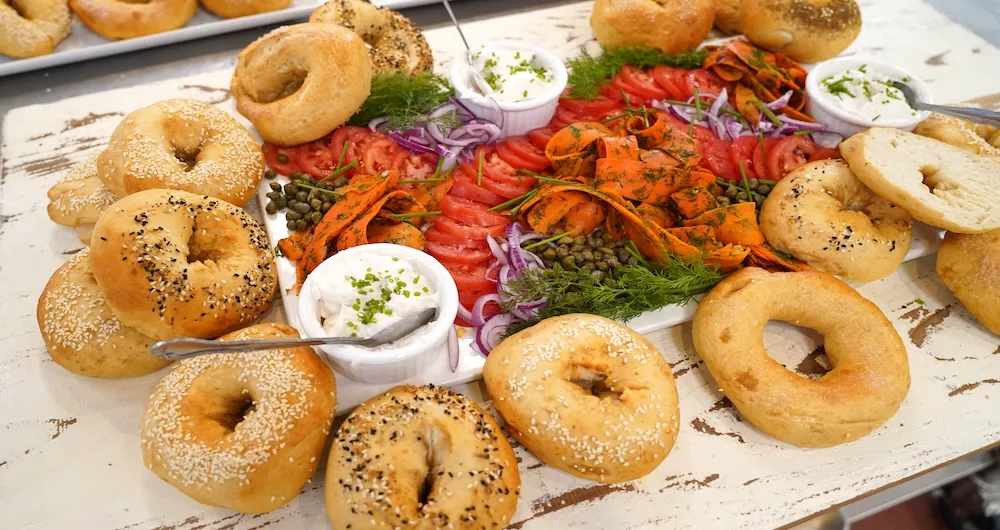In honor of National Bagel Day on January 15, Chef Jürgen David, ICE’s Director of Pastry Research & Development, provides insight into bagels’ fascinating history.
With their telltale ring shape and availability in a multitude of flavors, bagels are an iconic food. (And learning how to make schmear-worthy bagels is an important part of the Pastry & Baking Arts curriculum at ICE.)
But where bread history stretches back more than 10,000 years, bagels as we know them are a slightly more modern invention, likely originating between the 13th and 17th Centuries in Poland. Understanding bagels’ most salient features is key to understanding their origin story.
“What's special about the bagel — compared to other breads and pastries — is that it gets cooked twice,” Chef Jürgen says, “meaning that after you shape it and proof it, you actually boil it before you bake it. [This is how bagels] get their characteristic chewy texture and skin."
It’s the latter, he explains, that helps to create the ideal support for toppings such as sesame seeds, poppy seeds and garlic.
However, the boiled aspect of bagels also hints at a potentially darker history. Some sources say that boiling the dough was how Jewish bread makers in 17th Century Poland worked around anti-semitic laws barring them from selling their goods outside the Jewish community.
Other sources say this was not the case. Rather, they suggest that as early as the 13th Century, Jewish bakers in Poland were baking both for themselves and for Christians — which was substantially more freedom than other Jewish business people had — and that it was during this time that bagels became popular as a leaner bread option during Lent. In this version of bagel history, the boiled aspect is thought to have been modeled after the pretzel, the only other well-known boiled-then-baked bread at the time, and introduced to Poland by German immigrants.
The circular shape of bagels helps them proof and bake evenly, but also reveals another historical detail.
“They used to hang them on dowels,” Chef Jürgen says, for both transport and display purposes.
In more modern history, bagels migrated to wherever Polish immigrants went, especially to New York and Montreal. As for the U.S., bagels arrived in the late 1800s alongside Jewish immigrants from Poland, who eventually developed a union for bagel baking. In what would come to be known as bagels’ ultimate topping, a schmear was then born: Industrial production of cream cheese, which was modeled after France’s Neufchâtel, began in New York in the late 1800s.
Other key bagel history events helped them proliferate. For example, an automated machine for making bagels was developed in Canada in the early 1900s – sixty years later, it was introduced in America. Soon after, flash-freezing bagels for distribution and sale in grocery stores was developed by Murray Lender.
Once Americans had a widespread appreciation for bagels, it was only a matter of time until both chain and independent bagel shops started popping up across the country, providing freshly baked bagels as they were meant to be.






